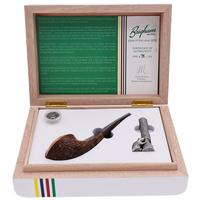Yesterday I had the worst tasting smoke I can remember. I switched pipes and had a pleasant smoke so I knew my palate wasn’t messed up. (After dumping the first pipe I drew some air through it. Yep, it was the pipe. WTH, it was fine a few days ago?)
My normal routine is pipe cleaners during and after every smoke and frequent water rinsing of the stem. Every few months they’ll get deeper cleanings with Everclear. This has previously worked well.
After a brief rinse of the offending stummel with warm water I was able to extract some nasty grunge composed of tar and pipe cleaner fibers from the shank that pipe cleaners alone hadn’t previously removed. Problem solved. The pipe tastes good again.
I’m convinced. Water rinsing will become part of my deep cleaning regimen.
My normal routine is pipe cleaners during and after every smoke and frequent water rinsing of the stem. Every few months they’ll get deeper cleanings with Everclear. This has previously worked well.
After a brief rinse of the offending stummel with warm water I was able to extract some nasty grunge composed of tar and pipe cleaner fibers from the shank that pipe cleaners alone hadn’t previously removed. Problem solved. The pipe tastes good again.
I’m convinced. Water rinsing will become part of my deep cleaning regimen.














